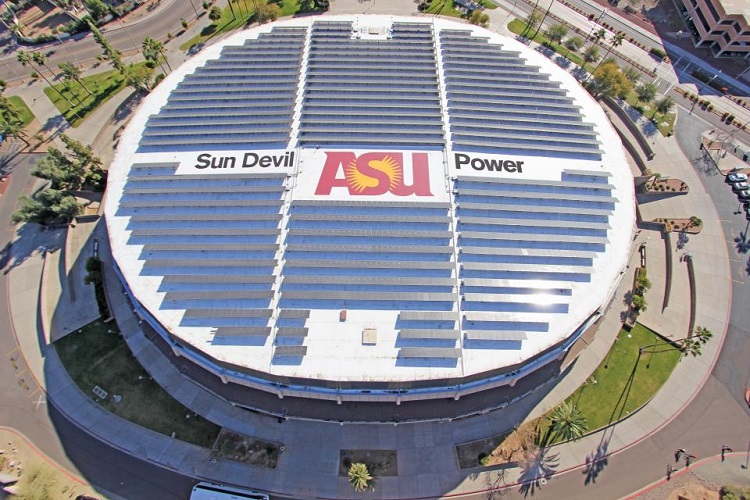REopt Informs ASU’s Carbon Neutrality Strategy

Wells Fargo Arena in Tempe is one of many ASU buildings and parking areas with solar panels. Photo from ASU
After Arizona State University (ASU) set an aggressive goal for all ASU campuses to reach carbon neutrality by 2025, NREL used the REopt® model to help the university evaluate multiple pathways to achieve 25%–100% reductions in equivalent carbon emissions.
The REopt analysis considered supply-side electricity and thermal energy solutions, including the utility grid, conventional and renewable energy generators, combined heat and power, batteries, thermal energy storage, biogas from a nearby wastewater treatment plant, and dispatchable loads. NREL evaluated various sensitivities around load, renewable energy costs, utility costs, and incentives. The result was an optimized system architecture, including technology, technology sizes, and operation strategy, which ASU is using to develop its carbon mitigation strategy.
Related Stories
NREL presentation: Campus Energy Approach, REopt Overview, and Solar for Universities
NREL fact sheet: NREL Screens Universities for Solar and Battery Storage Potential
Sponsors
Arizona State University
Key Partners
Ameresco
Rocky Mountain Institute
Contact
Share